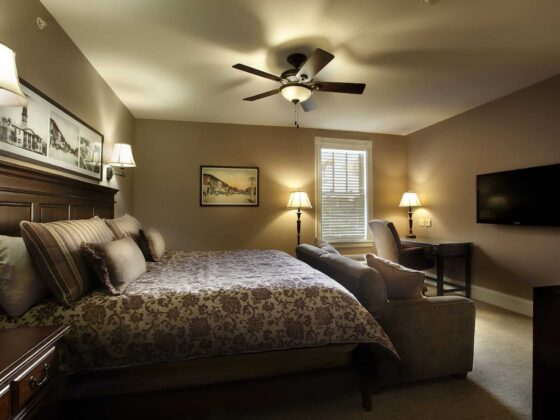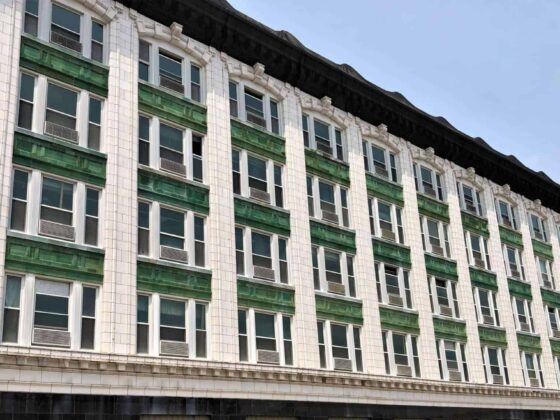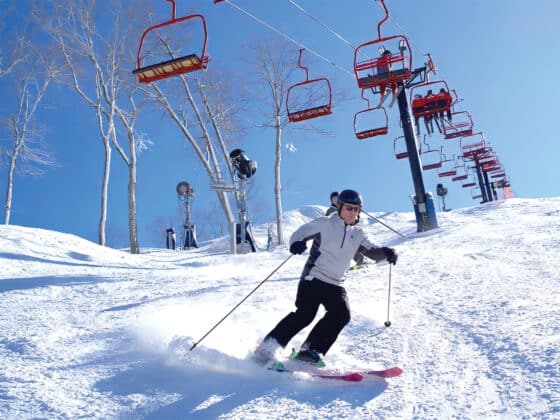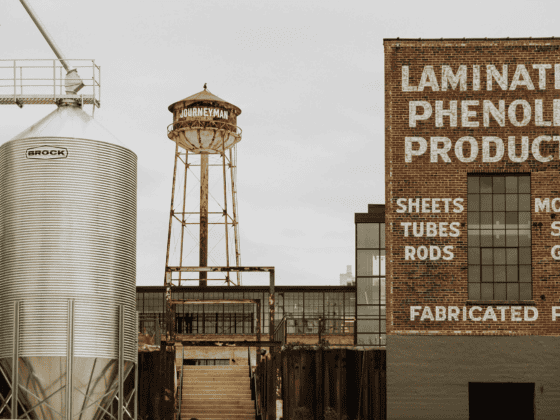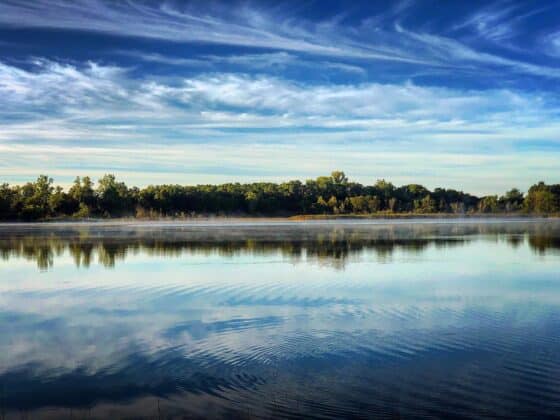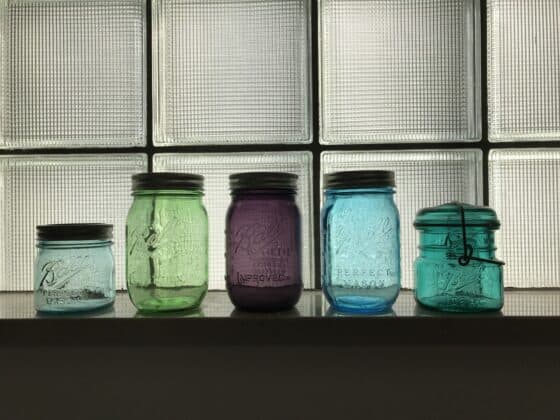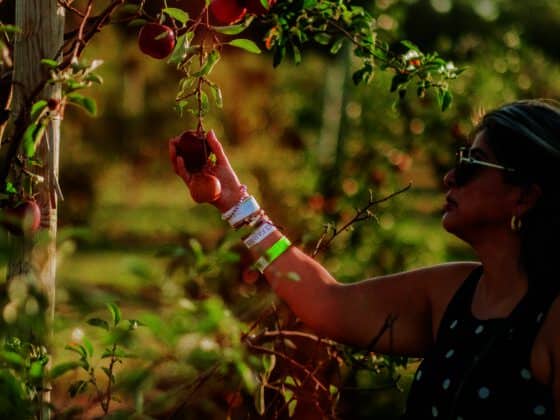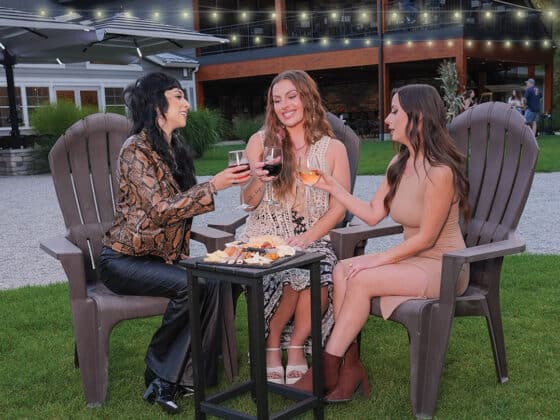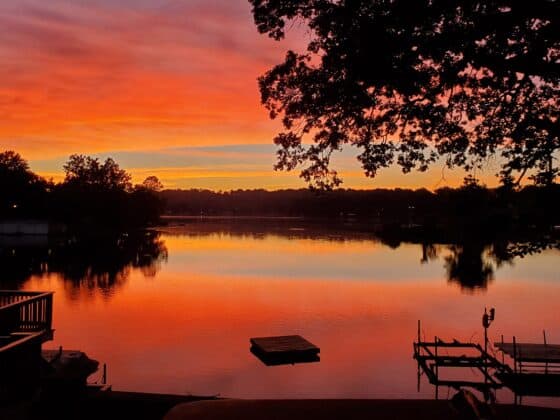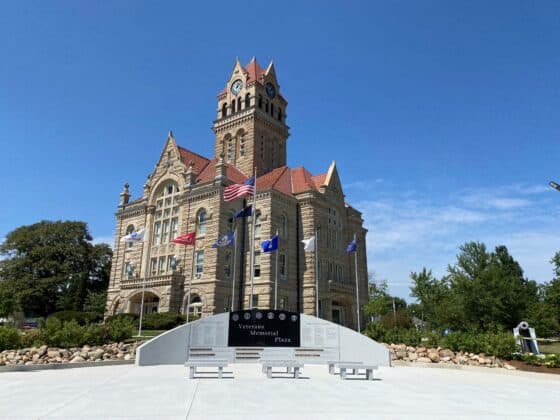White House china designed by President Benjamin Harrison’s wife Caroline. Original T.C. Steele paintings. A visit to an Amish home. And juicy tidbits of personal info. Intimate ties to fascinating Hoosiers are everywhere. And when they’re shared by in-the-know tour guides, you’ll be in the know, too.
story by Elizabeth Granger
Jayne Hoffman begins her guided tour with a photo of Benjamin Harrison standing in front of his home on North Delaware Street in Indianapolis. He’s surrounded by neighbors and friends who have gathered to congratulate him on having been named the Republican presidential candidate. It is June 1888.
Hoffman points to the fence in front of the house. The pickets would soon be gone, she says, taken for souvenirs by well-wishers.
The home is still there—known as the Benjamin Harrison Presidential Site. The fence is now iron, but the home is as it was in Harrison’s day. Close to 80 percent of its items belonged to the Harrisons.

Furthermore, visitors are able to walk through every room except the front parlor and a small upstairs room.
Guides point out family items, each with an anecdote. And they weave history into the personal story of the 23rd president of the United States. “Benjamin Harrison was a good person, but he wasn’t perfect,” Hoffman says. “He tried to do everything the right way.”
In Brown County, artist T.C. Steele and his second wife, Selma, are introduced to visitors by Andrea deTarnowsky, property manager/ tour guide at the T.C. Steele State Historic Site. In 1907 Steele bought a run-down farm near Nashville. “He decided it was time to make a new start in his personal life,” says deTarnowsky. “He also decided he was going to bring a new bride up here.”

That bride was Selma, a city girl from Indianapolis who was widower Steele’s junior by more than 20 years. After a two-day trek from Indianapolis, the new couple arrived at the home which Steele had designed. “Mind you,” deTarnowsky says, “this was her introduction to her new home. She got her first look at it only after she was trudged up this long hill, through the squirrel briars and mud, in her wedding shoes. The roads in Brown County were so bad that day the horse couldn’t even make it up the hill.”
Steele had designed the house and supervised its construction, something he’d never done before. He was, deTarnowsky says, “a little fuzzy on some of the practical areas.”
The House of the Singing Winds, named because the wind would “hum” as it hit the screening on the porch, is open for tours. So are Steele’s studio and Selma’s gardens. Opening in May is a new visitors center.

The Steele home is one of Indiana’s 11 state historic sites. Another is the Levi and Catharine Coffin House in Fountain City.
As conductors for the Underground Railroad, the Coffins helped more than 1,000 runaway slaves—now called freedom seekers—on their way to safety in the 1840s.
Tour guide Eileen Baker-Wall is a descendant of one of those freedom seekers. Instead of moving northward, as most did, her great- great-grandfather William Bush stayed in Indiana and helped others toward freedom. Baker-Wall’s great- aunt found Bush’s wooden shoes in the attic of his Fountain City home. Bush would have worn the shoes to protect his feet from being burned as he worked as a blacksmith. They’re prominently displayed in the new visitor center next door to the Coffin house.
The Lincoln Pioneer Village and Museum in Rockport focuses on the early 1800s; Abraham Lincoln spent his “formative years,” ages 7-21, in southern Indiana. Its prized possession is a hutch believed to have been made by Lincoln.

Opulence shines at the West Baden Springs and French Lick hotels in southern Indiana, where guides from Indiana Landmarks share details about the two posh hotels
that competed for the ultra-rich in the early 1900s. They hyped the region’s mineral waters—and the illegal gambling. If you were anybody, or wanted to be anybody, you were there.
The hotels’ success plummeted with the 1929 Stock Market and they fell into disrepair. Enter Bill and Gayle Cook and their love for historic landmarks, couple it with casino gambling OK’d by the state legislature in 2003, and the two hotels—now both part of French Lick Resort— again welcome guests to luxury.
Kokomo Opalescent Glass shows how it makes glass magic during its tours. Visitors walk past furnaces where workers ladle molten glass into long-handled cups and walk it to its destination while ribbons of liquid fire trail behind them on the floor. The visitors then go through a glassblowing room and on into an art studio where a variety of exquisite designs are created.

In Columbus, it’s all about modernism. After World War II, Cummins Engine president J. Irwin Miller wanted to attract the best young engineers to work for his company. “He had a lot of exposure to great design and architecture,” says Erin Hawkins, director of marketing for the Columbus Area Visitors Center. “And he just happened, personally, to love modernism.”
The city needed new schools. Miller offered to pay the design fees if the school board chose an architect from a list he provided. “That was it,” Hawkins says. “A one- time offer. Until it was time for the next school. Eventually it evolved into the Cummins Foundation Architecture Program that is still alive today.”
Now more than 70 Columbus buildings, including the Miller House, have a modernist feel. The visitors center conducts tours of Miller’s modern home and of the more ornate Edwardian home in which he grew up. There is also an architecture highlights bus tour.
Gary Knowles, president of the Midwest Travel Journalists Association, calls the bus tour “an eye-opening, extraordinary feast for the eyes.” He nominated the tour for a coveted GEMmy from MTJA; it was presented to the visitors center last summer.

Knowles recommends guided tours. “A good tour guide will help you focus your attention on things that are important, and also add context, background and perspective to weave together facts and tales and opinions into the kind of unforgettable Any Warhol “guess-what-I-heard” story that you’ll be telling amazed friends for years to come,” he says. “And they’ll be saying to one another, ‘Geez, they sure do get around to some interesting places.’ “Or you could just wander around and see some pretty interesting things and hope someday someone who has taken the guided tour tells you all about it before you forget what you saw.”
In Shipshewana, three Amish bus tours are offered by the Blue Gate Amish Tours. Each is limited to a dozen people; the tour bus stops at Amish businesses or homes. “You’re with a small group of people; you get your questions answered,” says Andy Rohrer of Blue Gate Hospitality.
At Wilstem Ranch near French Lick, it’s an ATV rather than a bus—and it can be driven by the guest. These side-by-side tours, with guide, let visitors be drivers or passengers on four-passenger ATVs. One guest called it “an amazing tour full of bumps, dips, mud, grass, property history and speeding through a field as fast as you can go.”

Tours take visitors into a cave at Squire Boone Caverns in Mauckport. Squire Boone and
his brother Daniel discovered the caverns in 1790; Squire Boone later lived there with his family.
The cave introduces visitors to stalactites, stalagmites, flowstone and rushing streams of water. The walk covers about 1/3-mile along lighted, paved walkways and steel bridges and ends with a 73-step spiral staircase. The cavern stays at 54 degrees year-round, so a jacket or sweater is recommended.
Wolves are the big attraction at the education/research facility Wolf Park in Battle Ground, but there are also coyotes, foxes and bison. Operations coordinator Kimber Hendrix says the animals are socialized so they enjoy being around people—but they are fenced in.
There are special events because, Hendrix says, “we don’t want things to always be the same for the animals or for the guests.” Regular tours are in the afternoons. Popular special tours include cookout howl nights, Wolf Park after hours, Easter egg hunt, watermelon party, pancake breakfasts. “If you’ve been once, you haven’t seen it all,” Hendrix says.

In Michigan City, there’s the Barker Mansion, built in 1857 and renovated in 1905. Guided tours introduce visitors to the 38-room house with original furnishings and art and to the family of John H. Barker, one of the founders of the railcar industry. The Haskell & Barker Car Company eventually merged with Pullman.
For years visitors have asked if the mansion in haunted. So blackout tours—which sell out quickly—are now offered on Friday and Saturday nights in October. In his blog, heritage interpreter T.J. Kalin says the mansion is, first and foremost, a historic institution; his job is to convey the history of the family and of the region. But, he adds, his job “includes talking about what it is like to work here, and ghost stories are part of that behind-the-scenes side of the mansion. … Sometimes weird things happen and we have no idea what to make of it.”
And then there are the food tours. The star at Abbott’s Candies in Hagerstown is caramels. Crafted the old-fashioned way—small batches, hand cut, hand wrapped, hand packaged. Their tours start with a brief history of where Abbott’s began in 1890, and continue with the production side of the business, starting with the caramel room. Next stop is the chocolate room, and the final stop is the packing station.
Sechler’s Pickles in St. Joe opens the world of pickling to visitors, who are usually surprised to find more than 50 varieties of pickles, relishes and salsas.
The bottom line? Take a guided tour when it’s offered. If you’re not sure, ask if there is one. If there isn’t, or if you’re there when a guided tour isn’t available, do ask for a pamphlet or narrated CD or cell phone connection so you’ll know what you’re seeing. They’re available for sites that include Garfield Park Conservatory in Indianapolis; Quilt Gardens in Elkhart County; downtown Corydon, Indiana’s first state capital. And a walk through the French Lick West Baden Museum ends with a huge knocks-your-socks-off diorama that honors the county’s circus history.
Check individual websites for detailed information.



